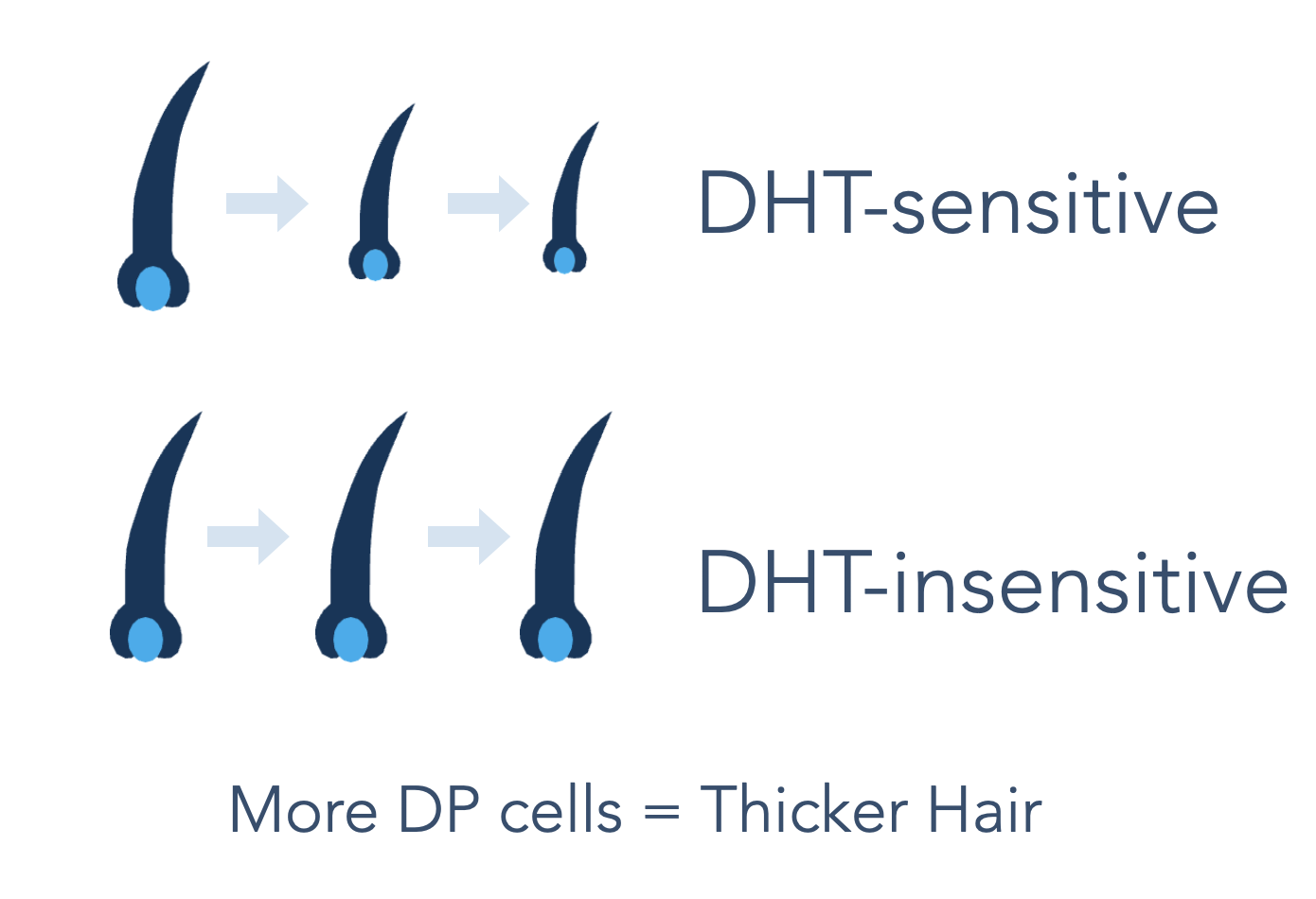Hair is a naturally regenerating mini-organ. It goes through periods of growth, then resting, shedding and regeneration. This process is controlled by a very specific group of stem-like cells at the base of the hair follicle called Dermal Papilla (DP) cells. The number of DP cells determines the thickness of the hair.
A full thickness hair on the scalp is called a terminal hair. Androgenetic alopecia, or male/female pattern hair loss, results from the number of DP cells within follicles decreasing at each hair cycle, leading to thinner hairs. Eventually, hairs become too thin to have a full cosmetic effect and are termed vellus hairs.
The pattern of hair loss is controlled by a number of factors, including inhibition by di-hydroxytestosterone (DHT). Follicles containing DP cells that are not affected by DHT remain thicker. Replacing DHT-inhibited cells with those insensitive to DHT would convert follicles and prevent further loss.
Androgenic alopecia is the most common form of hair loss and affects billions of people worldwide.

The HairClone® Concept
Step One: Banking follicles. Around 120 non-miniaturising hair follicles are taken by a hair transplant surgeon under local anaesthetic. This would take about 30 minutes and involve the surgeon extracting follicular units using a tiny punch extractor (FUE: follicular unit extraction). The patient’s own hair should comfortably hide the harvest sites. Initially, these follicular units would be cryopreserved and banked until needed.
Step Two: Growing follicle cells. When treatment is required, follicles would be taken from the follicle bank and processed to isolate DP cells. These cells would be multiplied 1000 fold in an MHRA licensed facility using HairClone’s proven cell culture technology.
Step Three: Cell injections. At HairClone partner clinics, multiplied DP cells would then be micro-injected into the patient’s scalp into miniaturising areas. The aim is to convert follicles into non-miniaturising follicles and rejuvenate hairs. This would enable them to produce thicker, terminal hair shafts and restore/maintain a more youthful appearance.
In a later version of the product, injected cells may be able to create brand new hair follicles by a process called follicle neogenesis. Research is ongoing.
